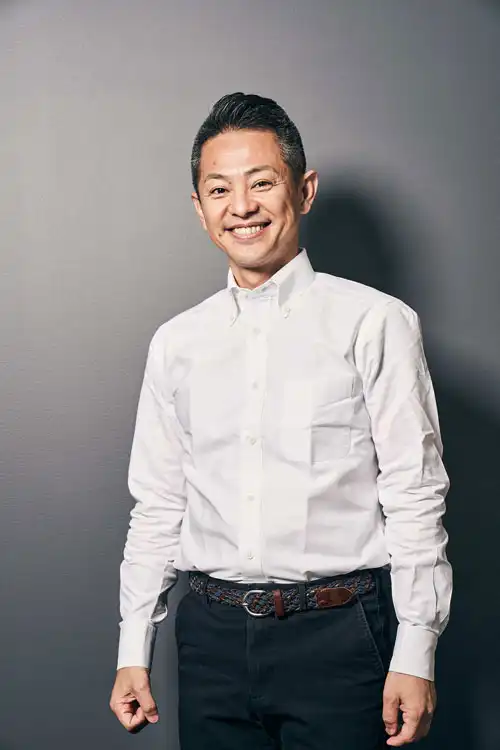2023/06/01
Technology of Japanese start-up featured by doctors (Series #31)
The Second Part: NTT PARAVITA, Supporting a Colorful Life in Your Way
Clinical Doctor, Disease management and Patient monitoring, Patient data, Japan, Digital Therapeutics (DTx), Sleep disorder

Source: NTT PARAVITA
The Uniqueness of NTT PARAVITA
In the first part of this issue, I explained the services of NTT PARAVITA CORPORATION (hereafter “NTT PARAVITA”), which uses ICT to address sleep issues. In this second part, an interview with Mr. Wataru Mizukami who is engaged in business support for NTT PARAVITA at Paramount Bed Co., Ltd (hereafter “Paramount Bed”) will be introduced to discuss the uniqueness of the company and its future business development.
Q1: I understand that the Department of Psychiatry, Osaka University, is promoting the “Society 5.0 Project,” and that research using sleep sensors is the beginning of this project. Could you start by explaining this research?

Source: NTT PARAVITA
Mr. Mizukami: The “Sleep Monitoring Service,” which is being tested on a large scale in Sakai City, is a social experiment being conducted by five companies: Sakai City, Osaka University, NTT WEST (NIPPON TELEGRAPH AND TELEPHONE WEST CORPORATION), NTT PARAVITA, and Paramount Bed. Osaka University is participating as a member of the “Society-5.0” research team. The research team is led by Dr. Ikeda (Psychiatry) and Dr. Yamakawa (Geriatric Nursing).
The program is designed to provide free three-month loans of sleep sensors to approximately 300 (actually 260 due to research exclusions) general citizens (limited to elderly living alone or in elderly-elderly households) who requested them through promotion by Sakai City. Nurses/health nurses belonging to NTT PARAVITA will provide monthly lifestyle improvement advice based on sleep data. We are verifying the extent to which changes in the health status and lifestyle behavior of the elderly occurred due to this program and the effects of these changes. Sleep data has shown considerable improvement in the intervention group (improvement in subjective sleep values based on the Athens Insomnia Scale *1). However, the Osaka University research team is still analyzing the research results. The endpoints of this research are whether sleep improvement advice is effective in promoting health (and preventing nursing care) and whether it reduces socioeconomic costs.
Q2: Could you tell us about the purpose of NTT PARAVITA and its most recent goals?
Mr. Mizukami: Based on the results of Sakai City, the service should be offered to each municipality as a health measure for single/elderly households, which are relatively high-risk individuals, although it is a Population approach.
In addition, our company wishes to aim for nationwide dissemination of the service with the assistance of local governments, even though it is an uninsured service with self-payment under the framework of “community support programs” and “general long-term care prevention programs.”
In addition, Tenri City and Hirakata City have also been commissioned to provide general care prevention services. Using this as a model and the demonstration in Sakai City as solid evidence, our goal is to “spread new sleep services through local governments as a policy for the elderly.”
Furthermore, for the working-age population, we are offering a 3-month sleep improvement service. We offer “Nemuri no Are Kore,” which provides support in the form of accompaniment with a personal sleep trainer from our company. We would like to expand our business to help everyone become healthier by providing this service to companies aiming for Health and Productivity Management and health insurance societies that want to improve the results of specific health guidance and by developing it as a health service that includes measures against metabolic syndrome for the working age.

Source: NTT PARAVITA
Q3: Various sensor technologies and products based on new ideas are entering the sleep tech market, but what do you think makes NTT PARAVITA unique?
Mr. Mizukami: Wrist-type sleep sensors such as Apple's and ring-type sensors such as Oura-Ring are spreading in the market at an overwhelming speed. For the elderly, these “wearable” sensors are not “accepted” well, and since there is a high need for long-term behavior change intervention, Paramount Bed’s “Active Sleep ANALYZER” sheet-type sleep sensor installed under the mat are very well accepted, especially by local governments and elderly care services. The strength of the sensor is demonstrated.
There are four stages to sleep improvement as follows.
(1) Interest in Sleep
(2) Sleep Knowledge Acquisition
(3) Sleep Visualization
(4) Sleep Improvement
(Continue to the next)
The information contained in this article is compiled by the respective authors based on publicly available information. We assume no responsibility whatsoever for any damage or disadvantage caused by actions taken based on such information. Unauthorized reproduction of articles, photos, charts, etc. is prohibited.
Copyright © 2023 LSMIP office / CM Plus Corporation
A Series of Articles

